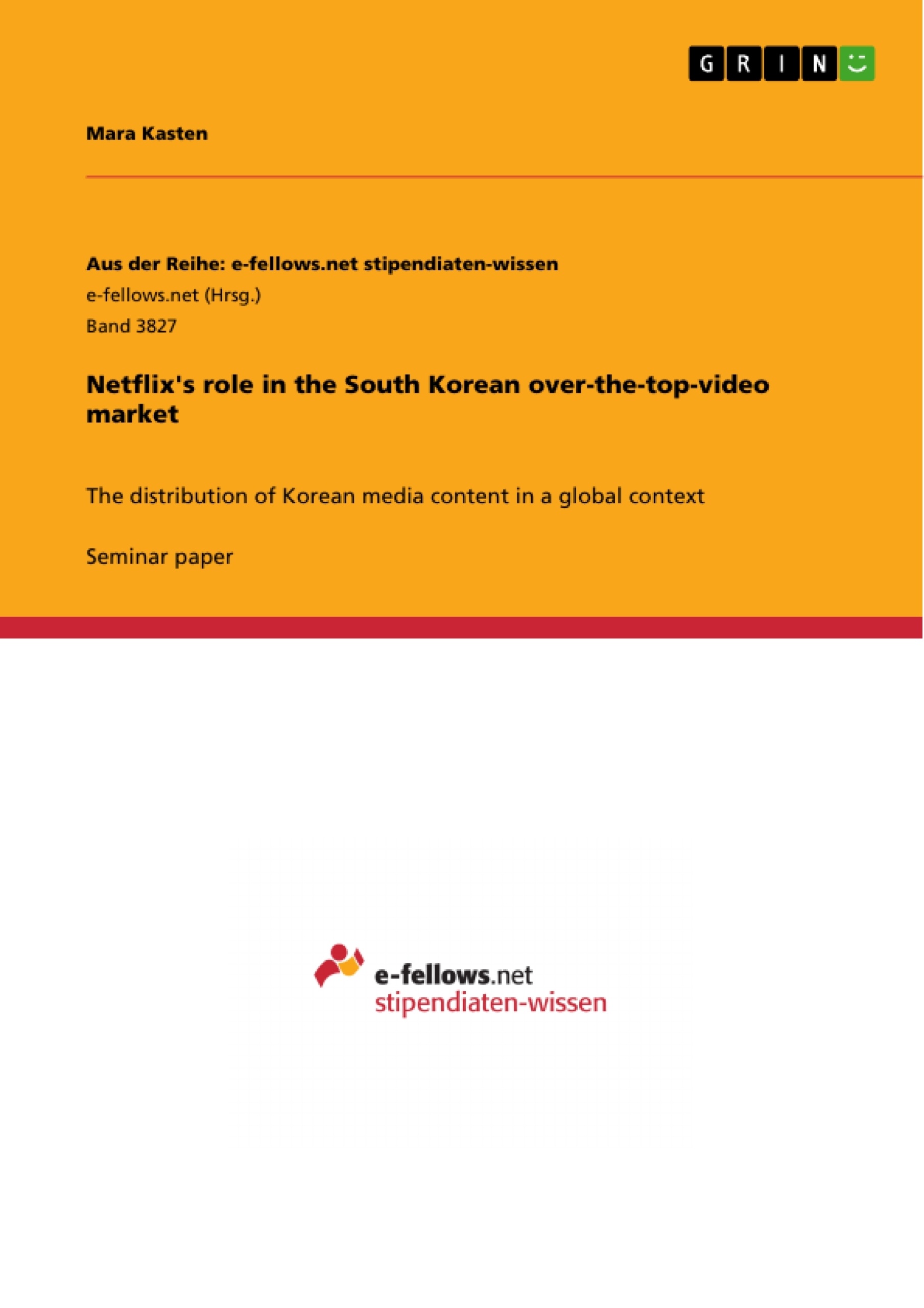This paper discusses, on the one hand, the South Korean (hereafter Korea) OTT (over the top) video market and the struggles of foreign SVOD (subscription video on demand) services in Korea. On the other hand, it looks at the distribution of Korean media content in a global context through digital platforms. The primary example chosen is Netflix.
First, I will briefly review the selected literature, then list the rationale and thesis before explaining why a political economy approach is used, and what theoretical framework is applied in the analysis. In the main section, the objects of analysis are the highly competitive Korean OTT market, and the role of Netflix in the distribution of Korean content outside of Korea. Finally, in the conclusion, I will reiterate the rationale, and state how I have argued the thesis statement. Additionally, the main findings will be summarized, and the usefulness of the selected theoretical framework evaluated.
Inhaltsverzeichnis (Table of Contents)
- Introduction
- Literature Review
- Rationale, Thesis and Approach
- Theoretical Framework
- The Korean OTT Market
- Netflix in Korea
- Korean Media Content in a Global Context
- Conclusion
Zielsetzung und Themenschwerpunkte (Objectives and Key Themes)
This paper aims to analyze the South Korean OTT video market and the challenges faced by foreign SVOD services like Netflix in Korea. It also explores the distribution of Korean media content globally through digital platforms, with a focus on Netflix. The paper uses a political economy approach and theoretical frameworks of media flows (dominant flow and contraflow) and media convergence to understand this complex landscape.
- The competitiveness of the Korean OTT market and the role of established media companies.
- The influence of Western culture in Korea through the distribution of American content by Netflix.
- The growing popularity of Korean media content globally and its potential to challenge Western media hegemony.
- The role of media convergence in enabling both the distribution of Western media and the rise of Korean contraflow.
- The impact of technological innovations on the global media economy and power structures.
Zusammenfassung der Kapitel (Chapter Summaries)
- Introduction: This chapter provides an overview of the paper's focus, which is to analyze the South Korean OTT market and the distribution of Korean media content in a global context. It also outlines the rationale, thesis, and approach used in the paper.
- Literature Review: This chapter examines existing literature on the "Korean Wave" and the Korean online video market. It highlights the role of digital technology and social media in the spread of Korean cultural products, and discusses the competitive landscape of the Korean OTT market.
- Rationale, Thesis and Approach: This chapter further explains the paper's rationale for focusing on Netflix's role in the Korean OTT market and its impact on the global distribution of Korean media content. It presents the thesis that media convergence enables the simultaneous distribution of Western dominant flow and Korean contraflow of media content.
- Theoretical Framework: This chapter introduces the theoretical framework used in the analysis, focusing on media flows (dominant flow and contraflow) and media convergence. It explains how these concepts can be applied to understanding the changing dynamics of the global media economy.
Schlüsselwörter (Keywords)
The paper explores key concepts such as the Korean OTT market, Netflix, Hallyu, dominant flow, contraflow, media convergence, political economy, and the global distribution of Korean media content.
- Quote paper
- Mara Kasten (Author), 2019, Netflix's role in the South Korean over-the-top-video market, Munich, GRIN Verlag, https://www.grin.com/document/1014090



